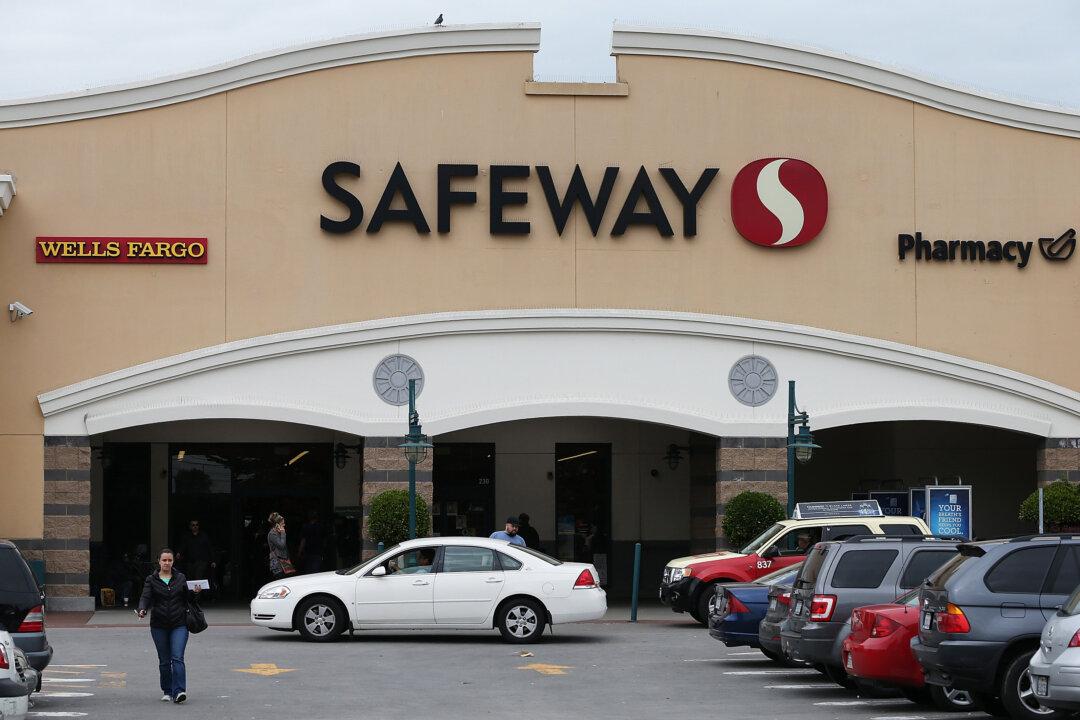SAN FRANCISCO—A proposed ordinance requiring grocery stores to give a six-month notice before closing their doors seeks to resurrect a 1984 law that was vetoed by Mayor Dianne Feinstein at the time.
The ordinance aims to secure access to groceries for seniors and families within their own community.
Introduced in early April by Mr. Preston, the ordinance is called the “Neighborhood Grocery Protection Act.” Additional stipulations include a requirement to meet with community members prior to closure as well as a requirement to explore a replacement supermarket.
Nate Rose, senior director of communications at the California Grocers Association (CGA), told The Epoch Times in an email: “The Neighborhood Grocery Protection Act does nothing to help grocery stores stay open, instead it appears to only be preparing for more of them to fail. It ignores the root causes of a store closing—issues such as retail theft and changing neighborhoods, even the fact that sometimes a store location just doesn’t work out like a grocer thought it would. It’s throwing sand in the gears of an already failing business when you could have been working on the front end to ensure success.”
The Grocery Protection Act is part of multiple efforts by Mr. Preston to address food insecurity in San Francisco, specifically the Tenderloin and Fillmore district neighborhoods that he represents.
Other efforts include a resolution passed in March by the San Francisco Board of Supervisors declaring the need for a full-service grocery store in the Tenderloin an “Urgent Priority.” A press release for the resolution states that the Tenderloin district is a highly populated working-class neighborhood that has not had a full-service grocery store for decades, with the majority of residents lacking access to a car and relying on walking or public transportation to reach the nearest full-service grocery store; the nearest store is typically half a mile away and can be difficult to access for seniors and those with mobility issues.
Mr. Rose said, “The ordinance will have the opposite effect of bringing new grocery stores to areas in need because it subjects grocers to tremendous legal jeopardy if a store fails.”
He noted that business owners and grocers take on all the risk of investing in a new store location. He said that success is never guaranteed, especially not with slim profit margins—an average of just 2.2 percent for grocery stores.
“All this ordinance would accomplish is further complicating the math of building a sustainable business and investing in San Francisco neighborhoods,” he added.
The introduction of the ordinance comes on the heels of Safeway’s agreeing to delay its planned March closure at its Fillmore district location on Webster Street until January 2025. With efforts from the mayor, Safeway agreed to extend the closure date to give the city more time for a transition plan to maintain services for residents of the Fillmore community.
SFGATE reported that in the year before the closure announcement, that Safeway location closed down its self-checkout station, installed new security measures, and played classical music loudly in the parking lot to deter loitering.
Last year, Whole Foods closed its Market Street location after one year because of safety concerns. Supervisor Matt Dorsey, who represents the neighborhood where the store was located, told SFGATE that the reasons for the closure are what one might expect: Retail theft was an issue, and people who suffer from mental illness or substance abuse issues were having outbursts in the store.
Mr. Rose said that CGA is working with California’s legislative leaders to find solutions that will significantly deter retail theft.
He said, “There are three pillars the grocery industry thinks California’s leaders must include if they want to truly impact retail theft: Policies must target repeat offenders, aggregate theft offenses, and allow for multi-jurisdictional prosecution.”
He mentioned that the CGA supports the California for Safer Communities ballot initiative, which seeks to reform some of Prop 47’s unintended consequences.
“A similar program at the local level would be much more productive than what’s been proposed with the Neighborhood Grocery Protection Act,” Mr. Rose stated.







